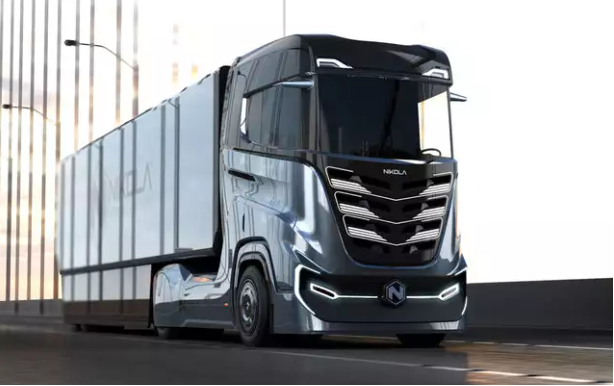
Seven months ago, the name Nikola Corporation was largely unknown to automobile consumers. The company, which makes hydrogen fuel cell-powered semi-trucks, went public on NASDAQ on June 9 with so much fun fare. Interestingly, Nikola did not pursue a traditional IPO. Instead, it went through a reverse merger with a special-purpose acquisition firm VectoIQ. This trend is becoming common. Traditional IPO takes at least a year to complete. But with a reverse merger, a private company can go public in as little as 30 days.
Riding on the swift rebound from coronavirus lows, as well as Tesla’s new highs, Nikola raced to a $34 billion valuation, with its shares skyrocketing more than double. That made it more valuable than legacy Ford and Fiat Chrysler. Trevor Milton, the 38-year-old founder of Nikola, became an instant multi-billionaire. The market seems to have settled, and the shares are currently trading at $62, with a market capitalization of $22.71 billion.
Remarkably, the company has not sold any semi truck yet. It is obvious the market is placing an aggressive forward valuation on Nikola. This is very outrageous for a company that is yet to generate any revenue from its revered hydrogen trucks. The little bit of revenue it has generated over the last three years, including $500,000 in 2019, has been solely from small scale solar projects, according to its SEC filings. In 2019, Nikola generated a net loss of $88.7 million, while its net losses were $64.3 million and $17.6 million in 2018 and 2017 respectively. Of course, Nikola is a futuristic company. But to put things in perspective, Pacca, one of the world’s largest truck makers, sells about 200,000 trucks a year. Its revenue for 2019 was $25.6 billion, and its current market capitalization is $25.76 billion.
Register for Tekedia Mini-MBA edition 19 (Feb 9 – May 2, 2026): big discounts for early bird.
Tekedia AI in Business Masterclass opens registrations.
Join Tekedia Capital Syndicate and co-invest in great global startups.
Register for Tekedia AI Lab: From Technical Design to Deployment (next edition begins Jan 24 2026).
By the way, valuation of tech companies is a bit different from traditional processes. Rather than start with the company’s past performance, it examined its future development, and then worked backwards. It’s common for tech companies to have aggressive valuations at IPOs. Sometimes it works out well, and the company grows into its valuations. And sometimes, it doesn’t. The most probable instance is that companies will always revert to their intrinsic value. Already, Citron Research has predicted that Nikola’s shares will fall 50% over the next month.
Nonetheless, Nikola is banking on some huge deals. It has secured more than 14,000 pre-orders, which worth about $10 billion in revenue, from companies led by Anheuser-Busch. It also estimated that sales will increase from “$150 million in 2021 to $3.2 billion by 2024 as it ramps up production. In 2024, it expects to sell or lease 7,000 battery-powered units and 5,000 hydrogen fuel cell trucks, according to its filing”.
Let’s take a brief look at history. Fuel cell technology has been around since 1960. In 1966, General Motors developed a hydrogen Electrovan prototype, but never made a business out of it. You can check some of its designs here. When Ballard Power opened a fuel cell manufacturing facility in 2000, its shares climbed to $140. But now, it trades at $19.2. Also, in 2003, President George Bush, poured $350 million into hydrogen research projects, but now, there are just about 8,000 hydrogen-fuel-cell vehicles on the U.S roads. Many technology innovations like this go through cycles of boom, and burst. And during these cycles, it gradually builds infrastructures, and converges with other technologies, that will quicken its adoption rate and aid its future sustainability. Based on this hypothesis, hydrogen fuel cell adoption might be closer to a tipping point than ever before.
In all of this, what are the other automobile companies doing? Early this month, Hyundai Motor opened the first commercial vehicle hydrogen station in Korea. In 2018, it invested $6.7 billion, to boost fuel cell output. In 2019, the engine maker Cummins acquired Hydrogenics, which makes fuel cells, for $290 million. Toyota Motor Corp. has been testing hydrogen fuel cell vehicles at the Port of Los Angeles for years. And by next year, General Motors and Honda Motor’s $85 million joint venture, will begin producing the fuel cell systems.
While massive investments in technology does not imply market adoption, hydrogen fuel cells might have its chance this time, and may be better than electric vehicles. Yes, a KPMG report, revealed that senior executives believed hydrogen fuel cells have a better long term future than electric cars. This does not still nullify the fact that Nikola’s shares have been over priced. And it will be interesting to see how things unfold.


